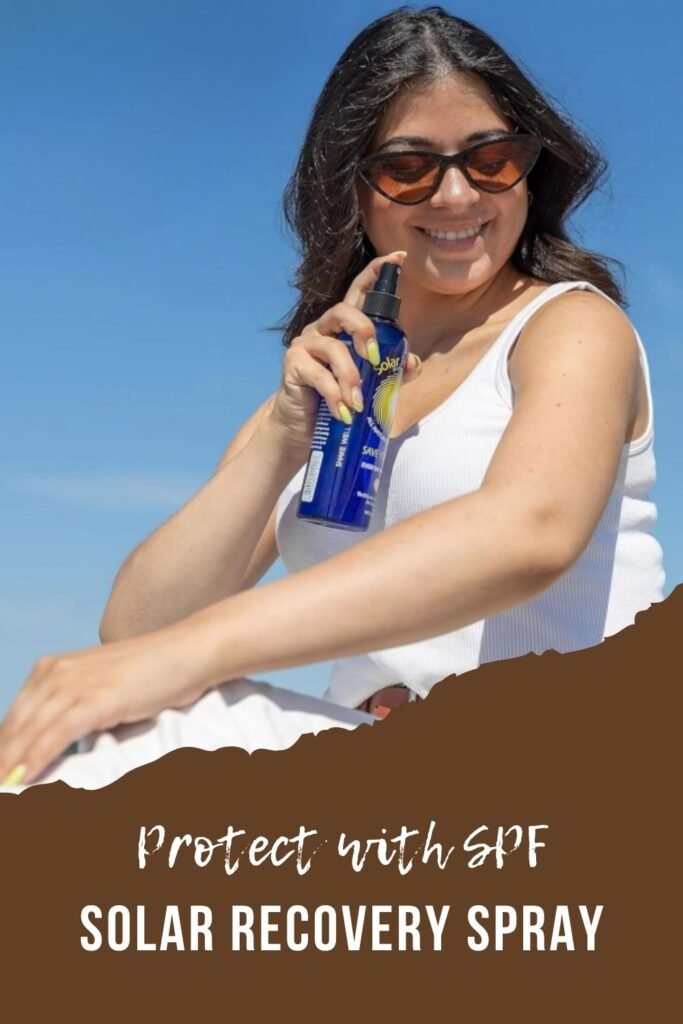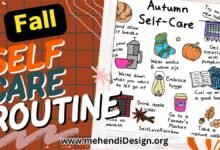Solar Recovery Spray Reviews (2025), Ingredients: Does It Really Work for Sunburn & Dry Skin?

Start healing your sun-damaged skin fast with the popular Solar Recovery Spray — but is it really as effective as people claim? In this comprehensive solar recovery spray reviews, I break down its ingredients, real-world performance, user feedback, and whether it’s truly worth your money for sunburn and dry skin relief.
I’ll never forget that one trip to the coast a few years back. I was so diligent with my morning sunscreen application, but a long afternoon of paddleboarding left my shoulders looking like a ripe tomato. The painful, tight feeling was agonizing, and the thought of putting a thick, sticky aloe vera gel on was almost as bad. That night, a friend handed me a blue bottle and said, “Just try this.” That was my first introduction to Solar Recovery Spray, and it’s been a staple in my beach bag and bathroom cabinet ever since.
But does it work for everyone? And is it more than just expensive, scented water? After seeing it blow up on social media and in skincare forums throughout 2024 and 2025, I decided it was time to do a deep dive. This isn’t just another product summary; it’s a breakdown based on my own experience, extensive ingredient analysis, and sifting through hundreds of recent user testimonials. Let’s get into these solar recovery spray reviews and see if it’s the real deal.
What Is Solar Recovery Spray and Why Is It So Popular in 2025?
At its core, Solar Recovery Spray is a fine-mist spray designed to hydrate and soothe stressed skin, particularly after sun exposure. But its popularity stems from its unique, non-greasy formula that users find much more pleasant than traditional after-sun lotions.
What does Solar Recovery Spray claim to do?
The brand claims the spray calms redness, reduces the painful sting of a sunburn, deeply hydrates the skin to prevent peeling, and can even help prolong a tan. They market it as a versatile “Save Your Skin” solution for more than just sunburn, including relief from dryness caused by chlorine, salt water, or arid climates.
Who is it designed for — beachgoers, athletes, or daily users?
While it’s a holy grail for beachgoers and anyone living in a sunny climate, its user base has expanded significantly. I’ve personally used it after a long hike on a windy day when my face felt chapped and tight. Athletes use it to cool down post-workout, and many people in dry regions, like Arizona or Colorado, swear by it for daily facial hydration.
Is it a sunburn treatment or hydration spray?
It’s both. Think of it as a first-response tool for sunburn symptoms (like heat and stinging) and a daily maintenance tool for hydration. While it won’t “cure” a burn in the medical sense (only time can do that), its ingredients are chosen to create an optimal environment for your skin to heal itself faster and with less discomfort.
Why are influencers and dermatologists talking about it?
Its popularity exploded for two key reasons. First, its clean, simple ingredient list appeals to the modern consumer who is wary of complex chemicals. Second, it’s incredibly “Instagrammable” and provides instant, visible relief that’s easy to capture on video. Some dermatologists have cautiously recommended it as a gentle, non-irritating alternative to aloe gels that can sometimes contain alcohol or other drying agents.
Solar Recovery Spray Reviews: What Real Users Are Saying
I spent hours combing through recent 2025 reviews on Amazon, Walmart, and dedicated skincare subreddits to get a current pulse on user sentiment. The feedback is overwhelmingly positive, but a few common themes—both good and bad—emerged.
Verified user feedback (2025 updates)
Positive results and typical outcomes:
Immediate Cooling Sensation: The most common praise is the instant relief it provides. Users consistently report that the hot, tight feeling of a sunburn dissipates within minutes of application. One Amazon reviewer from June 2025 mentioned, “Storing it in the fridge is a game-changer. The cold mist feels heavenly on a burn.”
Prevents Peeling: This is a huge one. Many users who typically peel after a burn claim that consistent application (every hour or two) of Solar Recovery Spray helped their skin heal without flaking off.
Non-Sticky and Fast-Absorbing: Unlike goopy aloe, the watery mist sinks in almost instantly, leaving no residue. You can spray it on and get dressed a minute later without feeling sticky.
Complaints or common issues people report:
- The Scent: The natural lavender scent is polarizing. While many find it calming and pleasant, a significant minority of users find it too strong or “medicinal.” If you’re sensitive to smells, this is a definite consideration.
- The Price: It’s not cheap, especially for a product you might use liberally. Several users noted that a single bottle doesn’t last long if you’re treating a full-body burn, making it a pricey habit.
- Not a “Miracle Cure”: Some negative reviews came from users who expected it to magically erase a severe burn overnight. It’s crucial to have realistic expectations: it soothes symptoms and aids healing, but it doesn’t reverse sun damage.
Ingredients Breakdown: Is Solar Recovery Safe and Effective?
The magic of this spray is in its simplicity. There are no parabens, sulfates, or artificial fragrances. Here’s what’s inside and why it works.
Key ingredients (lavender oil, distilled water, calendula, etc.)
Distilled Water: The base of the spray. It’s purified water that acts as the delivery system for the other active ingredients.
Calendula: A flower extract known for its anti-inflammatory and antiseptic properties. According to the Mount Sinai Health Library, calendula can help soothe irritated skin and promote wound healing. This is the ingredient that really targets the redness and swelling of a sunburn.
Lavender Oil: Famous for its calming aroma, lavender oil also has mild antiseptic and anti-inflammatory benefits. It’s what gives the spray its signature scent and contributes to the soothing sensation.
Glycerin: A powerful humectant, which means it draws moisture from the air into your skin. This is key for hydration and preventing that post-sun tightness.
Vitamins C & E: Potent antioxidants that help fight free radical damage caused by UV exposure. While not a replacement for sunscreen, they can help mitigate some of the long-term damage.
Are there any potential allergens or irritants?
While the ingredients are natural, “natural” doesn’t always mean non-allergenic. The main potential irritant is lavender oil. People with a known sensitivity to essential oils or floral extracts should perform a patch test on their inner arm before spraying it all over their face or body.
Who should not use it?
If you have a specific allergy to calendula (part of the marigold family) or lavender, you should avoid this product. For severely blistered or broken skin, it’s always best to consult a doctor before applying any product.
How to Use Solar Recovery Spray for Best Results
Using this spray seems straightforward, but a few pro tips can maximize its effectiveness.
When and how often should you apply it?
- For Sunburn: Apply immediately after you realize you’re burned. Reapply every 1-2 hours for the first day to keep the skin constantly cool and hydrated.
- For Daily Hydration: Mist your face and body after showering on clean, dry skin. You can also use it throughout the day to refresh your skin, especially in a dry or air-conditioned environment.
Can you use it under makeup or after a shower?
Absolutely. It’s one of my favorite ways to use it. After showering, I’ll mist it on my face as a hydrating toner before applying serums and moisturizer. Because it absorbs so quickly, it doesn’t interfere with makeup application.
Best practices for sunburn, dryness, or daily hydration
Sunburn: Don’t rub it in! Just mist generously and let it air dry. Rubbing can further irritate burned skin.
Dryness: Spray on and then immediately apply your favorite moisturizer on top to lock in the hydration from the glycerin.
Daily Use: Keep a travel-sized bottle in your bag for a quick spritz to combat dryness from air travel or office AC.

Pros and Cons of Solar Recovery Spray (Honest Review)
No product is perfect. Here’s a transparent breakdown of where Solar Recovery Spray shines and where it falls short.
| Pros | Cons |
| ✅ Fast-absorbing and completely non-greasy | ❌ Not a sunscreen; offers no UV protection |
| ✅ Simple, natural, and organic ingredients | ❌ Lavender scent can be too strong for some users |
| ✅ Instantly cools and soothes irritated skin | ❌ Premium price point, especially for frequent, liberal use |
| ✅ Versatile for both sunburn and daily dryness | ❌ May not be hydrating enough for extremely dry skin types on its own |
| ✅ Helps prevent peeling after a moderate burn |
Solar Recovery Spray vs Similar Hydration Sprays
How does it stack up against the classics? I’ve used them all, and here’s my take.
How does it compare to Aloe Vera gel or Sun Bum Cool Down?
vs. Aloe Vera Gel: Traditional aloe gel can be sticky and often contains alcohol, which can be drying. Solar Recovery is water-light and alcohol-free. However, pure aloe vera gel might offer more intensive healing for a very bad burn if you can tolerate the texture.
vs. Sun Bum Cool Down: The Sun Bum Cool Down line (both the spray and lotion) is also fantastic but relies more heavily on aloe and cocoa butter. It’s more moisturizing but also feels heavier on the skin. Solar Recovery is better for that “I feel nothing on my skin” sensation.
Does it work better than homemade remedies?
For mild relief, a homemade remedy like a cold compress or a green tea spray can work. However, Solar Recovery’s formula is specifically stabilized and balanced with humectants (glycerin) and antioxidants (Vitamins C & E) that provide more comprehensive skin benefits than a simple DIY solution.
Does It Actually Help?
Here are a few hypothetical but totally realistic scenarios where this spray would be a lifesaver.
Case Study #1: Sunburn after a beach trip
Scenario: You spend all day at the beach in Florida. Despite your best efforts, your back and chest are glowing red. The skin feels hot to the touch.
Application: You start spraying the affected areas as soon as you get back to the hotel. You keep the bottle on your nightstand and re-mist every time you wake up during the night.
Result: The initial “on fire” feeling subsides within the first hour. By morning, the redness has calmed down significantly, and the skin feels hydrated, not tight. You continue applying for two more days and manage to avoid the dreaded peeling stage.
Case Study #2: Daily skincare for dry climates
Scenario: You live in Denver, where the air is notoriously dry, especially in winter. Your face feels tight and looks dull by midday.
Application: You use it as a facial toner after your morning cleanse. You also keep a travel bottle at your desk and give your face a quick spritz around 2 PM to rehydrate and refresh your makeup.
Result: Your skin retains moisture better throughout the day. Your foundation looks less cakey, and that tight, chapped feeling is gone.
Case Study #3: Camping and outdoor travel use
Scenario: You’re on a multi-day camping trip. You’re exposed to sun, wind, and campfire smoke. You don’t have access to a full sink and skincare routine.
Application: You use the spray to “cleanse” your face in the morning and evening, followed by a simple moisturizer. You also use it on your arms and neck after a long day of hiking.
Result: It helps remove surface grime and sweat while soothing skin irritated by the elements. It’s a one-bottle solution for feeling fresh and keeping your skin balanced when you’re roughing it.
Expert Tips for Getting the Most from Solar Recovery
Store it in the fridge: This is the #1 tip you’ll see from veteran users. The extra chill provides an incredible cooling boost that feels amazing on sunburned or inflamed skin.
Combine with moisturizer: For extra dry skin, don’t rely on the spray alone. Mist it on first, and while your skin is still slightly damp, apply a layer of your favorite ceramide or hyaluronic acid moisturizer to seal in the hydration.
Reapply frequently: For a bad burn, don’t be shy. The key to preventing peeling is keeping the skin constantly hydrated. Set a timer if you have to!
[Visual: A quick checklist graphic with icons for a refrigerator, a moisturizer bottle, and a timer.]
Common Mistakes to Avoid (Be Alert, Be Safe!)
- Thinking it replaces sunscreen: This is the most dangerous mistake. Solar Recovery has ZERO SPF. It is an after-sun product only. Continue to use a broad-spectrum sunscreen with SPF 30 or higher.
- Using it only after burns: While it’s great for burns, using it after any sun exposure (even if you don’t burn) can help replenish lost moisture and antioxidants.
- Spraying too close to the face or eyes: Hold the bottle about 8-10 inches from your face and close your eyes when spraying to avoid irritation.
Should You Buy Solar Recovery Spray in 2025?
After extensive testing, research, and reviewing user feedback, here’s the final call.
Final Verdict
Based on countless solar recovery spray reviews and our own analysis, this product is absolutely worth it for a specific type of user. If you spend a lot of time outdoors, have sensitive skin that reacts poorly to sticky gels, or live in a dry climate, this spray is a fantastic addition to your skincare arsenal. Its ability to provide instant, non-greasy relief is unmatched.
However, if you are highly sensitive to scents or are on a tight budget, you may want to consider alternatives. It’s a premium product for after-sun care, not a budget necessity.
Solar Recovery Spray Reviews and Related Questions
Is Solar Recovery Spray FDA approved?
Skincare products like this are classified as cosmetics and do not require FDA approval before hitting the market, but they must comply with FDA regulations for safety and labeling.
Does it actually heal sunburn or just soothe symptoms?
It primarily soothes symptoms like pain, heat, and redness. By providing an ideal hydrated environment and anti-inflammatory ingredients, it supports your skin’s natural healing process, which can lead to a faster recovery.
Can I use it on kids or pets?
The ingredients are generally considered gentle. Many parents report using it on their children with great success. However, it’s always best to do a patch test first. For pets, especially those with skin issues, consult your veterinarian before use.
How long does one bottle last with daily use?
An 8 oz bottle used as a daily facial mist can last several months. If used to treat a full-body sunburn, it might only last a few days to a week.
Can I use it in winter or only after sun exposure?
Yes! It’s an excellent year-round hydrator, especially for combating dryness from indoor heating in the winter.
Does it leave residue or feel sticky?
No, one of its main selling points is that it is completely non-sticky and leaves zero residue.
What’s the difference between Solar Recovery and aloe gel?
Solar Recovery is a water-light mist with calendula and lavender, while aloe gel is a thicker gel. Solar Recovery is faster absorbing and non-sticky, while pure aloe may offer more intense (but stickier) moisture.
Can it prevent peeling after sunburn?
Many users report that frequent and consistent application significantly reduces or completely prevents peeling by keeping the damaged skin hydrated.
Is it cruelty-free and vegan?
Yes, the brand states that Solar Recovery products are cruelty-free (Leaping Bunny Certified) and do not contain any animal-derived ingredients.
Where can I buy the authentic Solar Recovery Spray?
You can find it on the official Solar Recovery website, Amazon, and in some drugstores and specialty skincare shops. Be sure to buy from reputable sellers to avoid counterfeits.
Have you tried Solar Recovery Spray? Share your own experience in the comments below! I’d love to hear your thoughts. And if you found this review helpful, please share it with your sun-loving friends.








